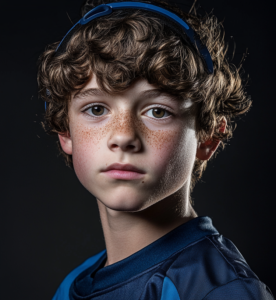By M. Bady Senior Sports Analyst December 30, 2024
Sarah Martinez hasn’t had a summer vacation since she was 11. Now 17, the star volleyball player’s calendar is a relentless cycle of training sessions, tournaments, and specialized camps. Her knees ache constantly, and she can’t remember the last time she hung out with friends outside of practice. Sarah’s story isn’t unique – it’s becoming the norm in American high school athletics.
The New Normal
The landscape of high school sports has transformed dramatically over the past decade. Gone are the days when athletes played different sports each season, enjoyed summers off, and focused on fun and development. Today’s young athletes are increasingly channeled into year-round specialization in a single sport, driven by the allure of college scholarships and professional dreams.
“We’re seeing kids as young as 12 being told they need to choose one sport if they want to ‘make it,'” says Dr. James Thompson, a leading sports medicine specialist at Stanford University. “The pressure to specialize early is creating a generation of athletes who are physically and mentally exhausted before they even reach college.”
The Hidden Costs
Recent studies paint a disturbing picture:
- 70% of specialized athletes report chronic injuries by senior year
- Mental health issues are 3x more common in year-round athletes
- Burnout rates have increased by 65% in the past five years
Lauren Chen, a sports psychologist working with high school athletes, notes a troubling trend: “These kids aren’t just dealing with physical fatigue. They’re struggling with anxiety, depression, and a loss of identity. When your entire life revolves around one sport, any setback feels like the end of the world.”
The College Scholarship Myth
Perhaps most concerning is the driving force behind this trend – the pursuit of college scholarships. However, the numbers tell a sobering story. Less than 2% of high school athletes receive full athletic scholarships, yet families invest tens of thousands of dollars in year-round training programs and travel teams.
A Return to Balance?
Some schools are pushing back. Westfield High in Colorado has implemented a mandatory three-month off-season for all athletes. Their athletic director, Marcus Rodriguez, reports surprising results: “Since implementing the policy, our injury rates have dropped by 40%, and our teams are performing better than ever. Kids come back refreshed and excited to play.”
The Way Forward
The solution may lie in a hybrid approach. Dr. Thompson suggests: “We need to find a middle ground between development and preservation. Athletes can still pursue excellence without sacrificing their physical and mental well-being.”
Progressive programs are emerging that emphasize:
- Structured rest periods
- Cross-training opportunities
- Mental health support
- Focus on long-term athlete development
- Integration of multiple sports skills
The Bottom Line
As we stand at this crossroads in youth sports, the question isn’t whether specialization has a place in high school athletics – it’s how we can create a sustainable model that doesn’t break our young athletes in pursuit of often-unrealistic dreams.
Looking Ahead
The next generation of athletes deserves better than a system that treats them like professional athletes before they’ve finished puberty. The time for change is now, but it requires a collective shift in mindset from coaches, parents, and athletic organizations.
What memories do you want your child to have of their high school sports experience – a blur of endless practices and chronic injuries, or a balanced journey of growth, joy, and sustainable excellence?
M.Bady is a senior sports analyst with over 15 years of experience covering high school athletics. Follow more of their work on [Platform].
